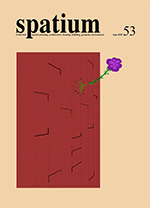Unpacking community-based architectural pedagogy: A systematic review of current scholarship
DOI:
https://doi.org/10.2298/SPAT241113005IKeywords:
community-based pedagogy, architectural education, participatory design, design-build, service-learningAbstract
Community-based architectural pedagogy encompasses a diverse range of practices – such as live projects, design-build studios, participatory design, and service-learning – yet the fragmented terminology and varying theoretical underpinnings pose challenges to understanding its broader educational impact. This systematic review examines ninety-five peer-reviewed and Scopus-indexed publications from 2014–2024 to explore how various approaches address student learning and community participation. Using a mixed-method approach, we combine a systematic quantitative literature review (SQLR) with qualitative thematic analysis to identify five pedagogical orientations: Community-Driven & Participatory Approaches, Experiential & Design-Build Pedagogy, Sustainability & Resilience, Digital & Interdisciplinary Innovation, and Culture, Heritage & Pedagogical Frameworks. While some papers prioritize student learning or community impact, the majority pursue a balanced synergy between both. Furthermore, the review also identifies six recurring pedagogical strategies employed in community-based design education: hands-on fabrication, collaborative design, place-based learning, digital engagement, sustainable and regenerative design, and community-driven engagement. However, limitations such as tokenism, scalability, and digital access persist. Findings reveal a Western-dominated field, characterized by a concentration of projects and scholarship in the U.S. and European regions with limited representation from non-English contexts, although there is growing global interest. Future models should be able to prioritize longitudinal impact, equitable power-sharing, and scalable hybrid models. This study advances discourse on balancing educational goals with meaningful community engagement.


